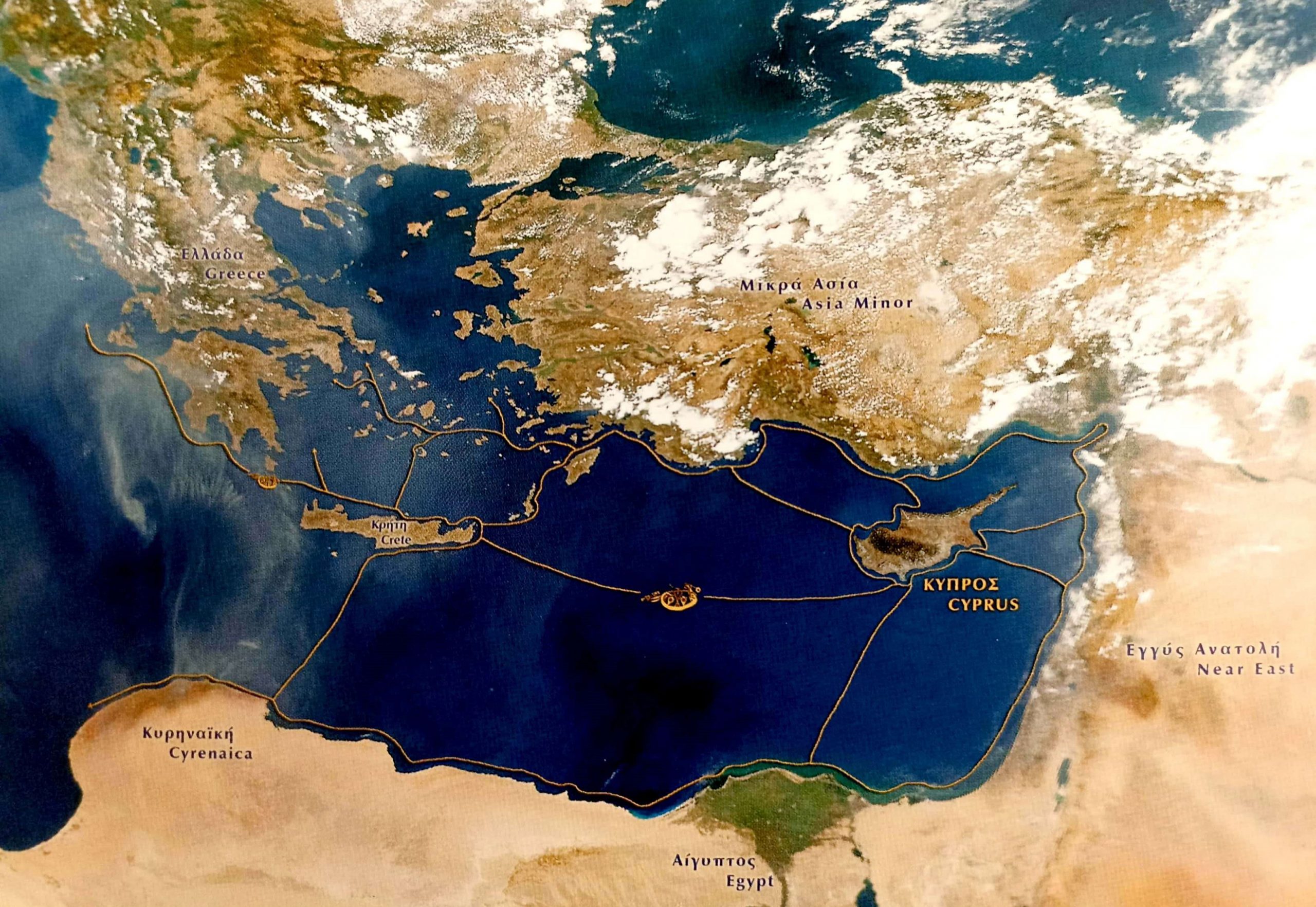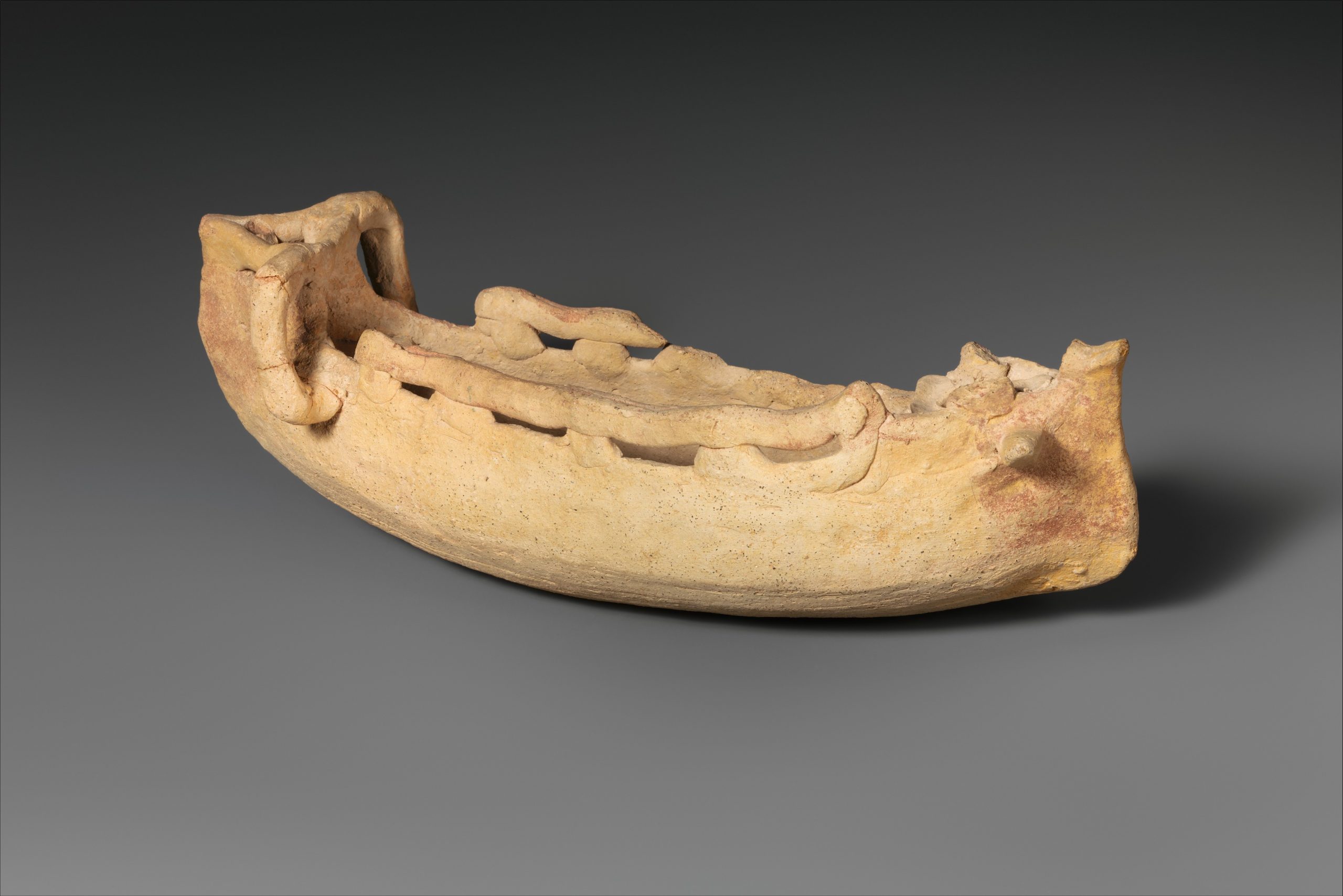Cyprus in eastern Mediterranean
CYPRIOT ART

GEOGRAPHY
With an area of 9251 square kilometers, Cyprus is the third largest island in the Mediterranean after Sicily and Sardinia.
Cyprus has two large mountain ranges, the Troodos (1951 m) and the Pentadaktylos (1024 m), a large fertile plain, Mesaoria, and a coastline extending for 650 km. It enjoys a mild Mediterranean climate (dry summers, mild wet winters) and has typical Mediterranean flora and fauna that supports excellent biodiversity.
There are many good natural harbours around the island (Salamis, Kition, Limassol, Kourion, Marion, and Soloi) which allowed communication with Asia Minor, the Levant, Egypt, and the Aegean (via the island of Rhodes) to be relatively easy.
CYPRUS IN ANTIQUITY
Because of its strategic location at the crossroads of three continents (Europe, Asia, and Africa), Cyprus was always a focal point in eastern Mediterranean trade. The island’s commercial role in the region supported its economic development but, at the same time, made Cyprus a constant target for all the great powers of antiquity, from the Assyrians to the Romans.
In antiquity, Cyprus was rich in metals, especially regarding the plentiful copper ores located on the north and northeast slopes of the Troodos mountain range. Metallurgy developed early on the island and remained a fundamental source of wealth at least until the Roman times. Metallurgy requires considerable amounts of timber as fuel for smelting and casting, and Cyprus was lucky enough to have mountains covered with dense forests. Timber was also used for shipbuilding and as an export for trade with countries that lacked forests, such as Egypt.
Through ancient texts from the Classical, Hellenistic, and Roman period, we learn that Cyprus was renowned for its wine, oil, and other agricultural products. Archaeological discoveries suggest that these products were of primary importance for the local economy as early as the Middle Bronze Age

